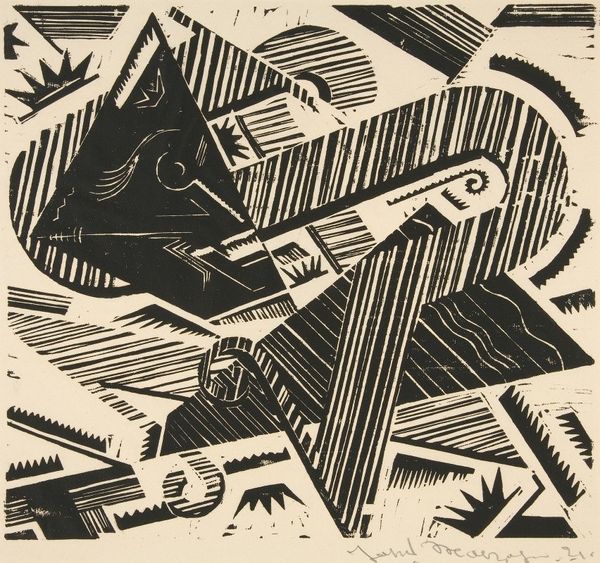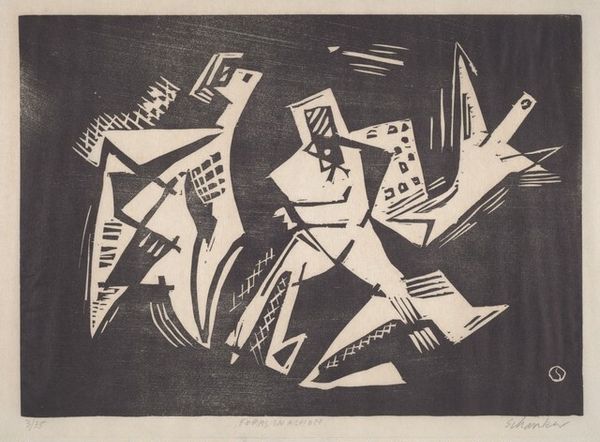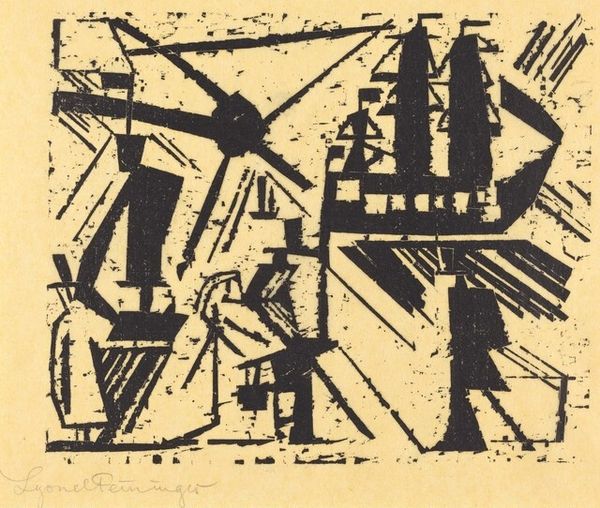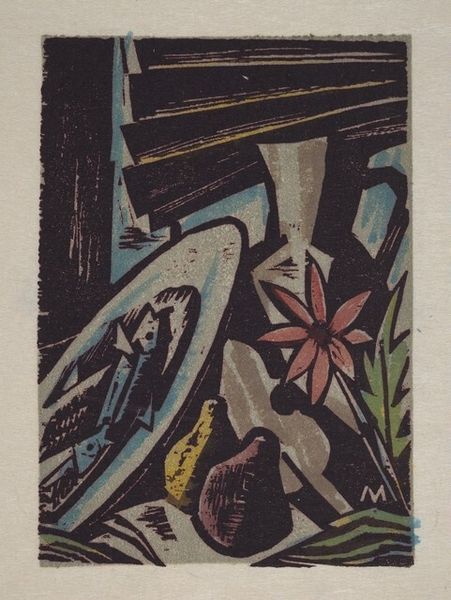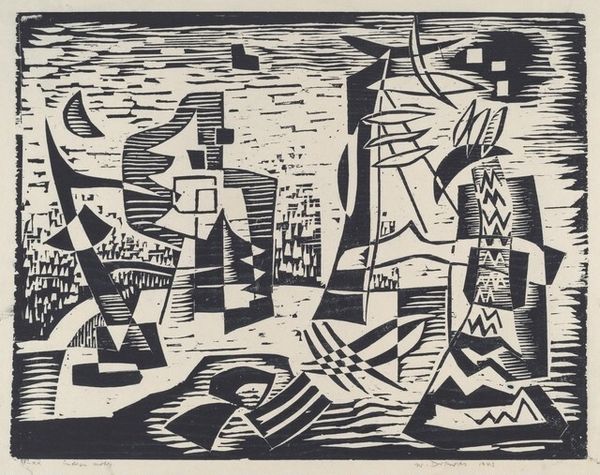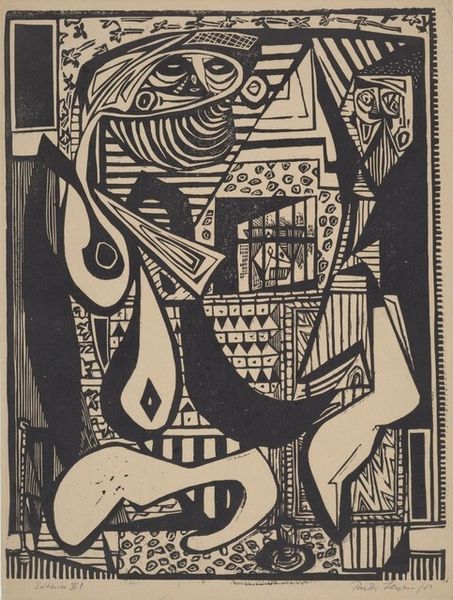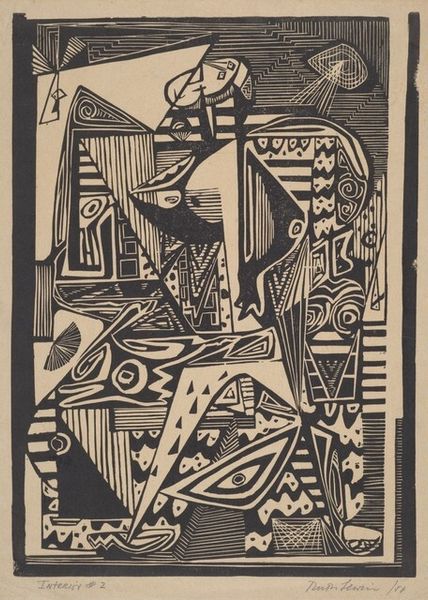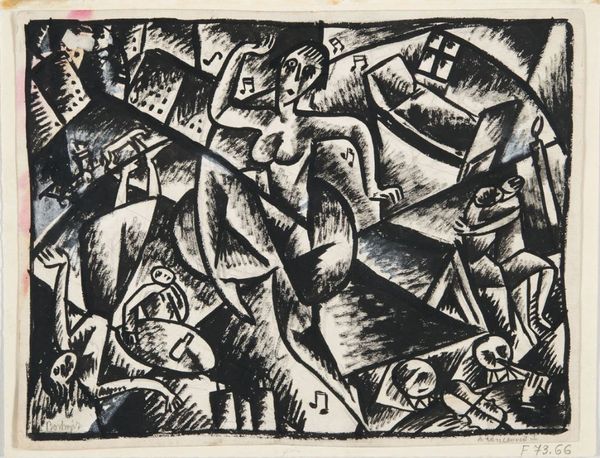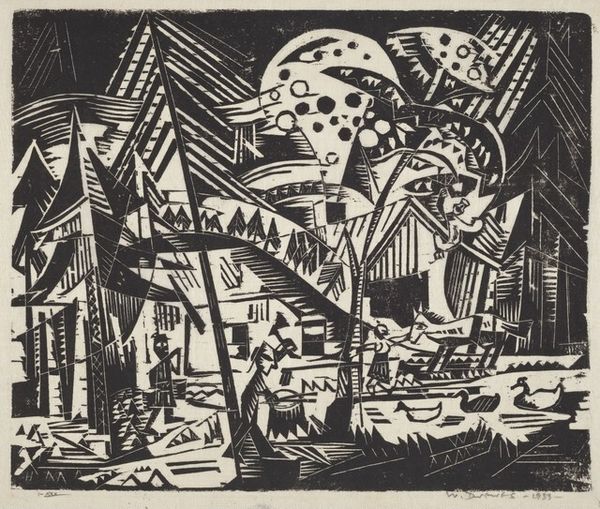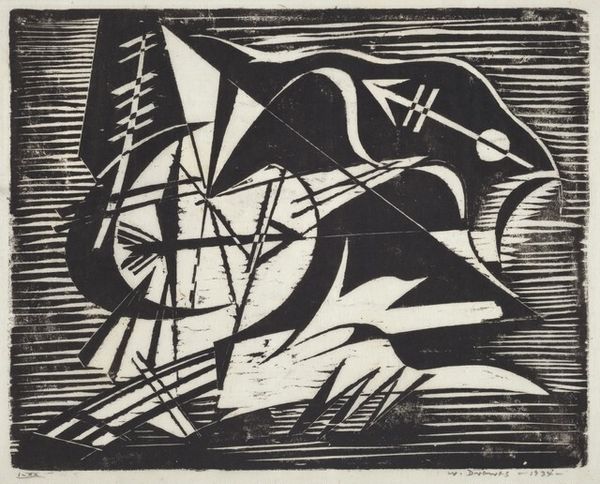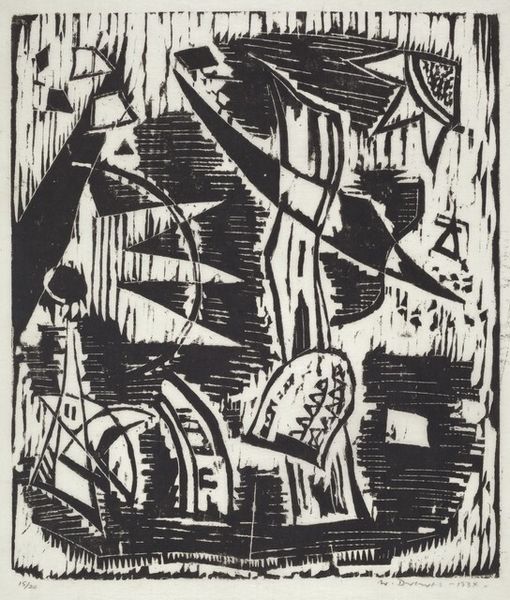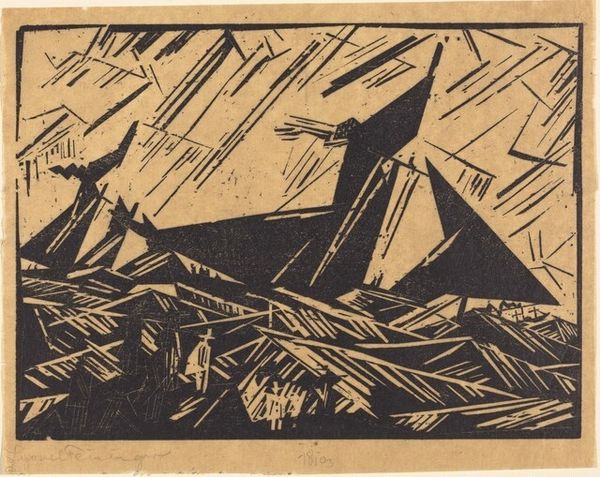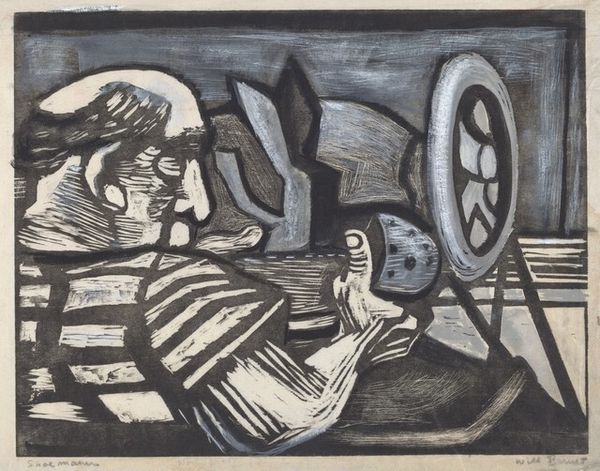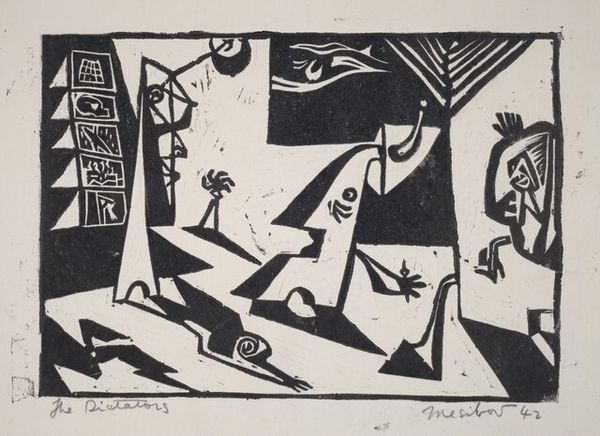
Dimensions: image: 23 x 33.6 cm (9 1/16 x 13 1/4 in.) sheet: 25.5 x 38 cm (10 1/16 x 14 15/16 in.)
Copyright: National Gallery of Art: CC0 1.0
Editor: So, this intriguing woodcut is "Dictator's Dream" by Louis Schanker, created in 1937. I am immediately struck by how the abstract figures, rendered in stark black and white with hints of blue and red, seem to depict a chaotic and unsettling narrative. What's your interpretation? Curator: This piece, produced in 1937, needs to be viewed through the lens of the sociopolitical context of the time. Considering the rise of fascism in Europe, what might "Dictator's Dream" signify in relation to the escalating political turmoil? Editor: It definitely seems like a direct response to that turmoil, doesn’t it? The disjointed figures and the oppressive darkness almost feel like a premonition. The figures look trapped, helpless even. Curator: Exactly. Schanker, deeply engaged with the art world and its public role, uses expressionistic abstraction to convey the psychological impact of authoritarianism. Note the claustrophobic composition and the fragmented bodies. They embody the disorienting and dehumanizing effect of dictatorial power on the individual. Who, then, is being dreamed *about*, and who is dreaming? Editor: That's a great question, I hadn't considered the ambiguity there. Is the dream the dictator’s vision for the future, or a nightmare of those he oppresses? Curator: It’s likely both simultaneously. Schanker isn’t just offering a literal representation. Instead, he’s delving into the symbolic realm, highlighting how dreams, like art, can be sites of both terror and resistance. This print also suggests the power of art to capture something profoundly truthful about society. How might the choice of printmaking as a medium enhance the political impact of this work? Editor: Because it allows for multiple impressions, facilitating the distribution of his message far and wide. It makes the art accessible to the masses. Curator: Precisely. It's fascinating to see how the artwork functions as a cultural mirror reflecting and challenging prevailing social narratives, wouldn’t you agree? Editor: Absolutely, seeing it in that context gives it a completely different weight. Curator: Indeed, it transforms our understanding from simply viewing to actively engaging with art's capacity to inform and inspire critical reflection.
Comments
No comments
Be the first to comment and join the conversation on the ultimate creative platform.
